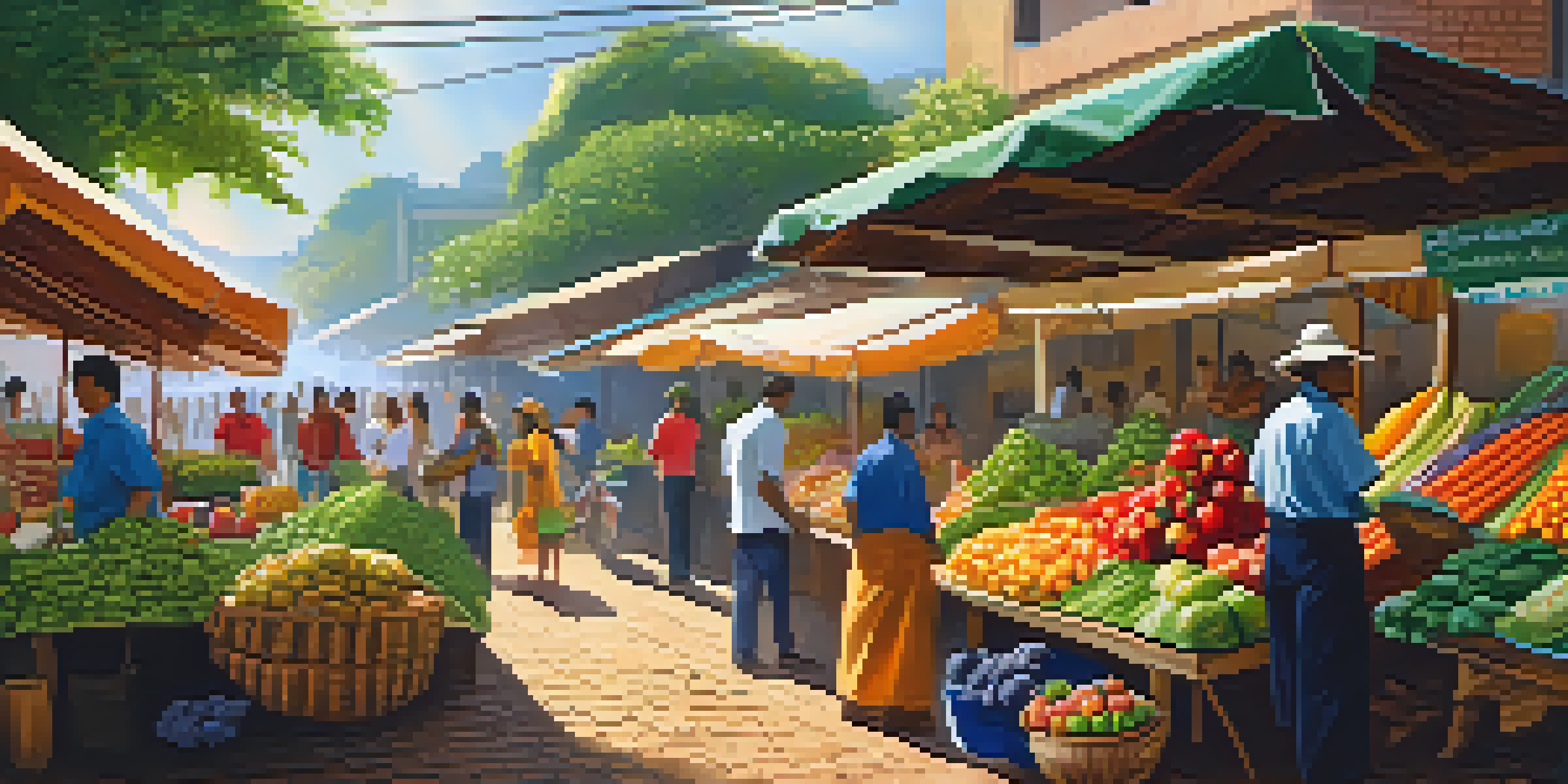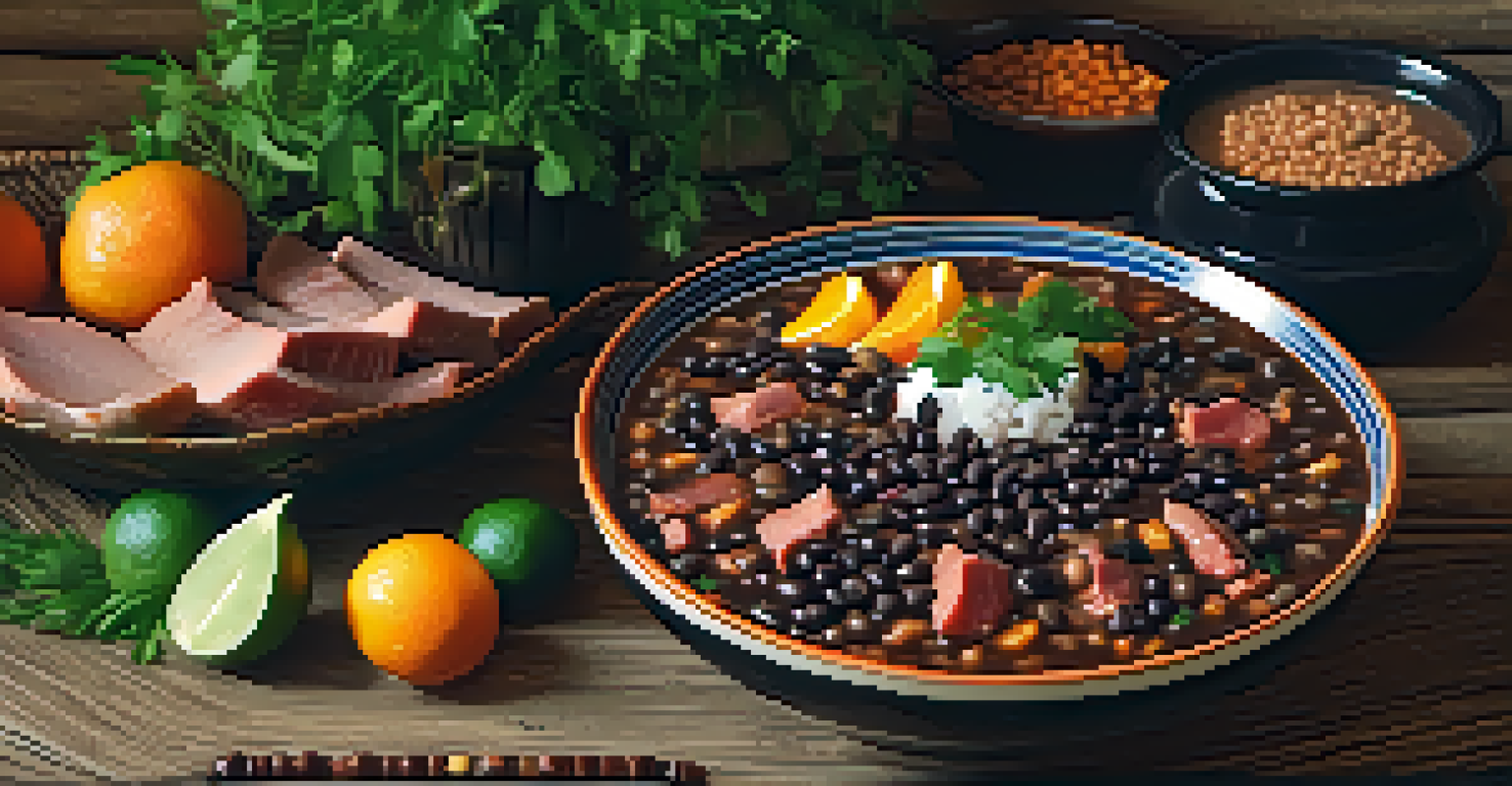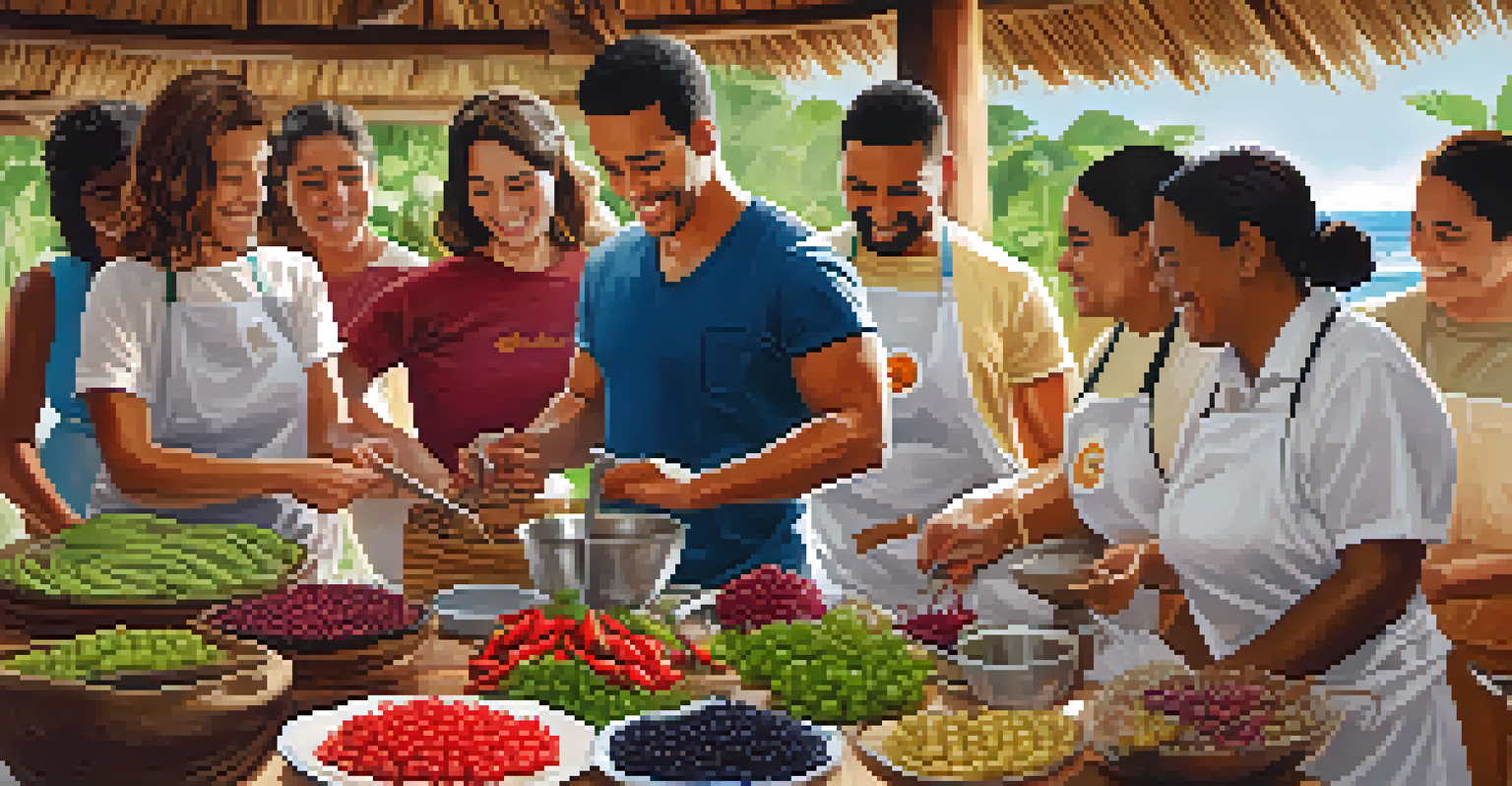Local Ingredients: The Heart of Brazilian Culinary Workshops

Understanding the Role of Local Ingredients in Brazilian Cuisine
Brazilian cuisine is a vibrant tapestry woven from local ingredients that reflect the country's rich biodiversity. Each region boasts unique flavors derived from indigenous plants, fruits, and spices. For instance, the Amazon rainforest offers a plethora of exotic ingredients that are seldom found elsewhere, providing a distinctive taste to Brazilian dishes.
Food is our common ground, a universal experience.
These locally sourced ingredients not only enhance the flavor profiles but also connect chefs and participants to the cultural heritage of Brazil. When you incorporate regional produce, you're not just cooking; you're telling a story of the land and its people. This connection is vital in culinary workshops, where the emphasis is placed on authenticity and tradition.
Moreover, local ingredients promote sustainability by reducing the carbon footprint associated with transporting food over long distances. By using what is readily available, Brazilian culinary workshops embody a commitment to both the environment and the local economy, supporting farmers and artisans in the community.
Exploring Unique Brazilian Ingredients: A Flavor Adventure
Brazil is home to an array of unique ingredients that can elevate any dish. From the tangy açaí berry to the sweet and creamy coconut, each ingredient has its own story and culinary application. For example, açaí is often used in smoothies and bowls, providing not only a burst of flavor but also a wealth of health benefits.

Another staple is cassava, a versatile root vegetable that can be transformed into flour, chips, or even a base for savory dishes. It’s a true chameleon of ingredients that adapts well to various cooking techniques. Workshops often encourage participants to experiment with cassava, creating both traditional and innovative recipes.
Local Ingredients Enhance Brazilian Cuisine
Brazilian cuisine is deeply enriched by local ingredients that reflect its diverse cultural heritage and biodiversity.
Furthermore, the use of local spices, like malagueta pepper, adds a kick to Brazilian dishes, showcasing the boldness of the cuisine. By incorporating such ingredients into cooking classes, participants get to experience the authentic taste of Brazil while learning about their origins and uses.
The Cultural Significance of Regional Ingredients
In Brazil, food is much more than sustenance; it’s a reflection of cultural identity and community. Regional ingredients play a pivotal role in this narrative, often tied to local traditions and celebrations. For instance, during the Festa Junina, corn-based dishes made with local maize become the star of the show, showcasing the importance of seasonal ingredients.
The best way to find yourself is to lose yourself in the service of others.
Culinary workshops highlight these cultural practices, allowing participants to immerse themselves in the festive spirit of Brazilian cuisine. Through cooking, they learn not only about the ingredients but also about the stories and traditions that accompany them. This cultural exchange enriches the culinary experience and fosters a deeper appreciation for Brazil's diverse heritage.
Moreover, the act of cooking with local ingredients creates a sense of community among participants. Sharing recipes, techniques, and personal anecdotes helps build connections, turning each workshop into a celebration of Brazil’s culinary landscape.
Hands-On Experience: Cooking with Local Ingredients
Culinary workshops in Brazil often emphasize hands-on experience, encouraging participants to engage directly with local ingredients. This approach allows them to observe the texture, smell, and flavor of each ingredient, fostering a deeper understanding of its role in cooking. For example, participants might get to prepare a classic dish like feijoada, using locally sourced beans and meats.
As they chop, stir, and sauté, participants not only learn techniques but also gain insights into flavor pairings and ingredient substitutions. This practical experience is invaluable, as it empowers them to recreate these dishes in their own kitchens, using local ingredients available to them.
Sustainability Through Local Sourcing
Using local ingredients promotes sustainability by reducing transportation emissions and supporting local economies.
Additionally, these workshops often feature visits to local markets, where participants can witness the vibrant selection of produce and interact with the vendors. This connection to the source of their ingredients enhances their appreciation for the food they cook.
The Influence of Local Ingredients on Brazilian Street Food
Brazilian street food is a delightful representation of the country's culinary diversity, heavily influenced by local ingredients. Vendors often showcase regional specialties, such as pastéis (fried pastries) filled with local cheeses or meats, and acarajé, a dish made from black-eyed peas and shrimp. These snacks are not just tasty; they encapsulate the essence of Brazil's rich agricultural landscape.
In culinary workshops, participants often explore how to recreate these beloved street foods at home, using fresh, local ingredients. This not only preserves the authenticity of the dishes but also encourages a sense of local pride and connection to Brazilian culture. The hands-on aspect of making street food allows for creativity and experimentation.
Moreover, street food offers a unique opportunity to dive into the world of fusion cuisine, where traditional Brazilian ingredients meet international flavors. Workshops may encourage participants to innovate, combining local ingredients with influences from other cultures, resulting in exciting new dishes that celebrate Brazil's culinary evolution.
Building Sustainable Practices with Local Ingredients
Sustainability is a growing concern in today’s culinary world, and Brazilian workshops often prioritize the use of local ingredients to promote eco-friendly practices. By sourcing ingredients from nearby farms, chefs reduce transportation emissions and support local economies. This commitment to sustainability resonates with participants, who are increasingly conscious of their food choices.
In addition to sourcing, workshops also emphasize minimizing waste in the kitchen. Participants learn techniques like composting vegetable scraps or creatively repurposing leftovers, fostering a mindset of sustainability. This approach not only benefits the environment but also enhances culinary creativity.
Cultural Connection in Cooking Workshops
Culinary workshops foster a sense of community and cultural appreciation through hands-on experiences with local ingredients.
Furthermore, by showcasing seasonal ingredients, workshops encourage participants to eat in harmony with nature. Understanding which ingredients are at their peak helps create dishes that are not only fresher but also more flavorful, reinforcing the connection between local sourcing and sustainable cooking.
The Transformative Power of Cooking with Local Ingredients
Cooking with local ingredients in Brazilian culinary workshops is a transformative experience that goes beyond just learning to cook. It fosters a deeper connection to the food we eat, the environment, and the communities that produce it. Participants often leave workshops feeling inspired and empowered to incorporate these practices into their daily lives.
This transformation is not limited to culinary skills; it extends to a broader understanding of cultural heritage and sustainability. By engaging with local ingredients, participants become ambassadors for Brazilian cuisine, sharing their newfound knowledge and appreciation with friends and family. This ripple effect can have a lasting impact on how food is perceived and enjoyed.

Ultimately, the heart of Brazilian culinary workshops lies in the celebration of local ingredients. It’s a journey of discovery, connection, and creativity that enriches not only the plates we serve but also the lives we touch along the way.